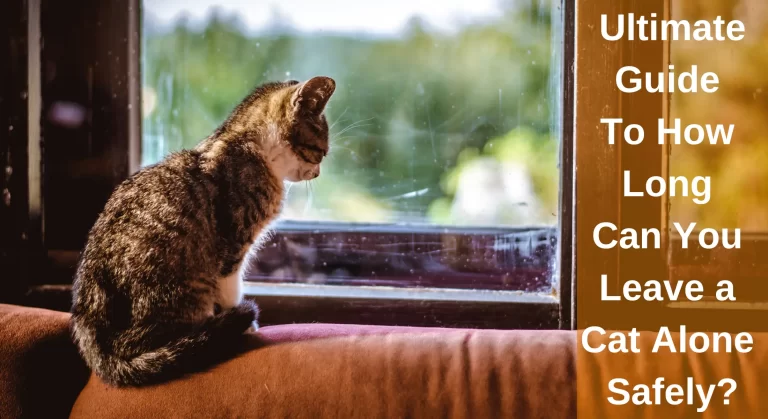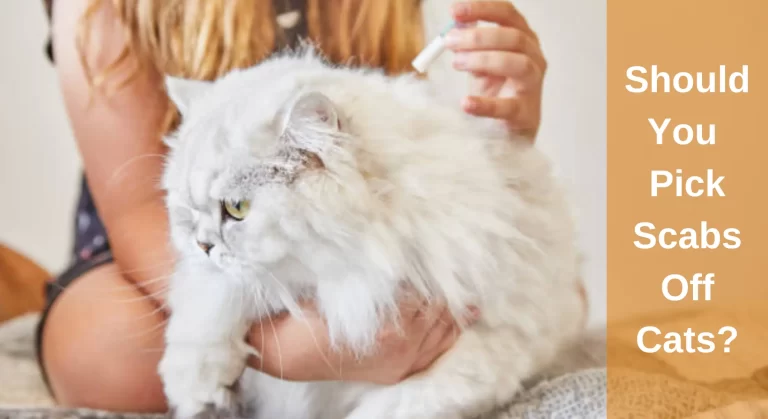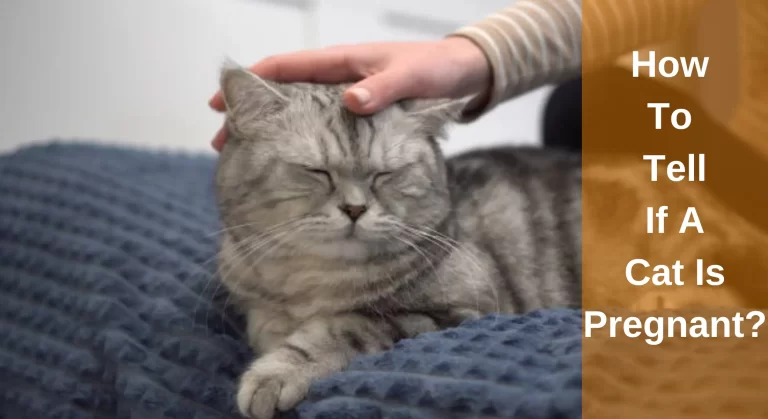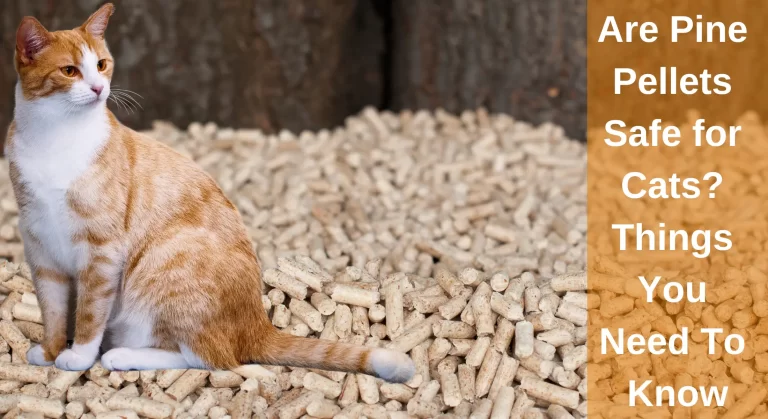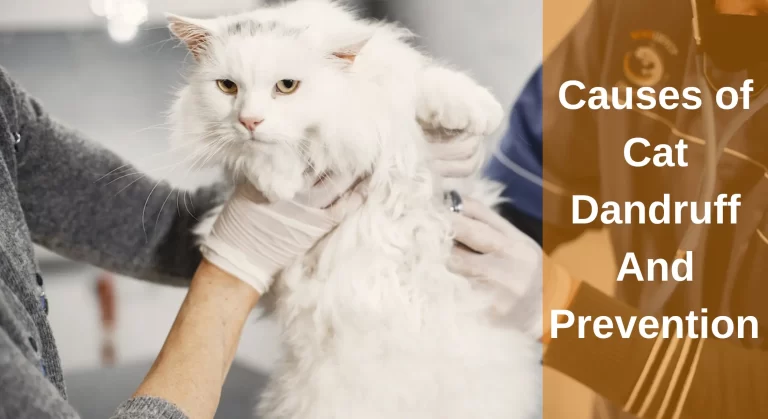How To Train a Cat to Use a Litter Box? A Guide to Litter Box Issues
Small kittens may need some help learning appropriate litter box habits, but the majority of adult cats will automatically pick a sandy, granular spot to discharge themselves. You can help your cat succeed with litter training by doing a few things.
In this article, you will find out the causes of cats not using the litter box as well as trained procedures to eliminate your cat properly.
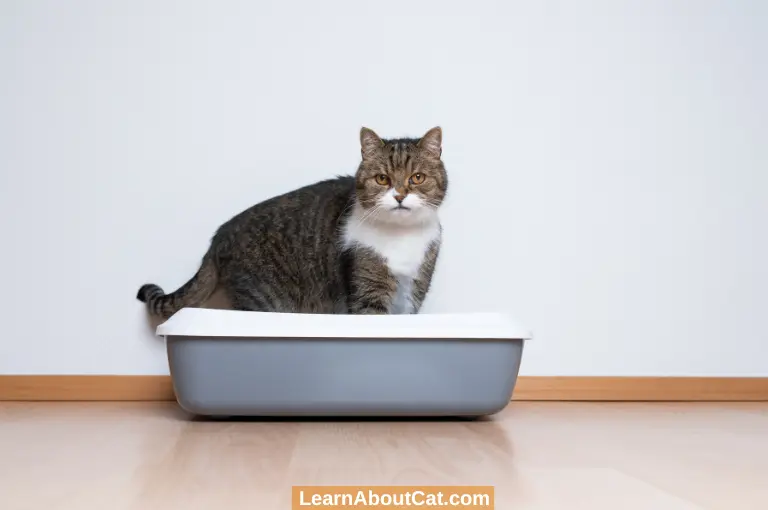
Why Do Cats Not Use Their Litter Boxes?
These common problems may be causing your cat to avoid the litter box:
- A filthy cat box.
- The household’s cats don’t have enough litter boxes.
- Your cat may have a medical condition that makes excessive urination unpleasant, whether in or out of the litter box.
- No privacy, uncomfortable surroundings with several escape routes, and a change in the sort of garbage you use.
- Issues with the litter box and health.
- Negative relationships Maybe your cat didn’t want to use the litter box. Even if their health has improved, they could still link the box with unpleasant evacuation.
- A trash can with tall sides, such as a wastebasket with a cover or liner.
- Inadequately cleaned box.
- Stresses like moving, acquiring new pets, or having relatives move in with you.
- Dispute with another cat that resides in the house over a predisposition to relieve oneself on specific surfaces or textures, including carpet, potting soil, or bedding.
Also Read: Can Cats Find Their Litter Box If You Move It?
The usage of a litter box may be impacted by the common medical conditions listed below:
- Contamination of the urinary system (UTI). Your cat may have a UTI if they often use the litter box but only urinate in little amounts.
- Your cat could frequently use the litter box if they have bladder stones. They may experience agony and cry or meow as they try to defecate. It could hurt to touch their abdomen.
- Cats with interstitial cystitis. Bladder inflammation is a complicated symptom of feline interstitial cystitis. A cat may excrete outside of the litter box as a result of the urge to urinate.
Interesting Reading: Why My Cat Not Pooping But Acting Normal And When To Worry
What Causes Cats to Urinate Outside the Litter Box?
Before you start becoming worried, see whether any of the following circumstances apply to your cat’s accidents outside the litter box. Many people who own cats have the misconception that cats pee in unattractive places when they are annoyed or mad at you. This can’t possibly be real! In contrast to humans, cats do not use Machiavellian methods to plan their retaliation.
They usually bite you immediately if you annoy them. The majority of reasons why cats urinate outside of their litter boxes include litter and/or litter box issues:

1. Quantity of Litter
Make sure there is adequate litter for your cat to comfortably use it. Even a small amount of faeces will quickly fill up the litter box if there isn’t much of it. Your cat won’t be able to conceal her waste very well, so she’ll reveal it. This will smell awful and could possibly be harmful.
2. The Wrong-Sized Box
The size of the box is irrelevant to little cats and kittens, but if your cat has huge bones, it may require a very large toilet. It is best to use litter boxes that are at least 1.5 times as long as a cat’s body. 3 A box that size can be too small for some cats who are larger. In other instances, a bigger cat could produce the mark but choose not to conceal it by standing on top of the deposit. These furious cats could scratch the box’s outside.
3. Location of the Litter box
If the litter box is difficult to get into, your cat won’t want to use it. Make sure her litter box has a wide, clear entrance that isn’t blocked by clutter or other objects like furniture. Make sure the door is constantly open if the litter box is in a room with a door.
4. Stress and Anxiety
Changes in a cat’s environment and routine can cause worry and anxiety in them. These changes include things like moving into a new house and temporarily or permanently introducing your cat to another animal. Cats mark their territory with urine. If they feel threatened in their ownership of their territory, they may pee someplace other than their litter box.
5. Substrate Issue
To keep your cat faithful to its litter box, pay attention to the type of litter it favours. Keep at it once you’ve discovered it. Since your cat, like the majority of cats, enjoys the status quo, any alteration to the litter box’s composition may discourage your cat from using it.
The ideal litter is healthy for cats, holds on to odors and waste, and absorbs moisture. If you have a liking for a certain product, you can start indoctrinating when you are a kitten. However, adult cats have their own viewpoints, therefore you will lose the discussion. Changing the litter may be the best solution, though, if you’ve tried everything else and ruled out any other probable reasons for your cat’s litter box difficulties.
6. Changes in the Litter
The quality of the trash you choose is really important. It will affect how much and how strongly there will be an odor. Allergies are frequently brought on by perfume in the litter. The litter box should be sufficient to mask the smell of excrement, so you shouldn’t require perfume.
Additionally, the litter you select should be capable of absorbing the maximum amount of poop. It shouldn’t be excessively damp or filthy after your cat uses it.
The pee should become a brick so you can just scoop it up.
7. Lack of Boxes
Numerous cats are owned by cat lovers. Place an extra litter box to avoid any trouble for your feline buddies. Small kittens typically get along quite fine sharing a litter box, but adult cats might battle over this valuable space. It is possible for one cat in the household to seize control of the box and make an effort to prevent the use of the box by the other cats.
8. The Condition of the Litter box
They don’t want to be forced to use a filthy, frequently overflowing litter box. If you don’t regularly clean the litter box, your cat can get quite uncomfortable and stop using it. Make sure to completely replace her litter once a week and clean up her waste every day.
9. Medical Problems
A number of medical issues, including arthritis and urinary tract infections, might make your cat pee beyond the litter box.
If your cat suffers from a medical problem like a urinary tract infection that prevents her from retaining her pee, she may need to urinate straight immediately. Your cat might not be able to use her litter box comfortably and choose a more comfortable location to pee if she has continuous discomfort that makes it difficult for her to move or walk, such as arthritis.
10. Sharing a Garbage can
If you have several cats in your house, it is typically a good idea to designate distinct litter boxes for each cat. If your home is too tiny, you could be forced to share a litter box with two or more cats. The shared litter box needs to be kept in particular clean first. If several cats are using it, it will quickly become dirty. It could be problematic if a new cat moves into your house and starts using the same litter box as your existing cat.
Also, Check Out: Can Cat Urine Cause Headaches?
Instructions for Setting up Litter Boxes in Steps
- As the first stage in litter box training, the actual placement of the litter box should be done appropriately. Most cats like their own company and tranquillity. Picking a spot apart from your pet’s food and water is a smart idea because cats frequently don’t like to use the restroom where they eat. Some cats may even refuse to use the litter box if it is positioned too close to their food dishes.
- Fill the bottom of the box with about 2 inches of litter. Given that cats prefer to hide their messes after elimination, you must offer your cat enough litter to perform this task.
- Once the box is ready, place your cat inside it so it can become used to the smell and feel of the litter. However, do not become alarmed if they do not vanish right away. Some cats could require a few minutes to “go.”
- Continue placing your cat in the box on a regular basis. In fact, kittens nearly always need to use the restroom after eating. Stopping your cat and leading it to the litter box is necessary if you notice it peeing anywhere else. Whenever they use the box toilet, compliment them.
- You might need to move the litter box or change the type of litter you’re using if you’re having difficulties getting your cat to use the litter box.
You Might Also Like to Read This: How to Get Cat Pee Out of a Couch?
How to Prevent & Solve Litter Box Problems?
Cats regularly have the bothersome problem of incontinence urinating, which can be caused by a number of factors. Since cats naturally want to dig and bury their waste, most just need a little instruction to use a litter box.
However, it might be quite difficult to correct a cat’s improper toilet habits. Utilize these suggestions to prevent and resolve litter box difficulties
Find Out: How Do Cats Know Where the Litter Box Is?
Prevention- How Can litter box Issues be Avoided?
- Decide where to put the litter box.
- Put the litter box in a somewhat secluded area, away from busy streets.
- For a few days, confine kittens to an area with a litter box until they consistently utilize it.
- Away from your cat’s food and water, as well as from loud noises that can shock or frighten your cat, such as washing machines, keep the litter box.
- Avoid placing your cat in places where they could feel cramped, such as closets or corners.
- Pick your litter carefully.
- Use simple, unscented clumping litter. Once your cat seems to like the litter you’ve found, keep using it.
Put the Litter box in Order
Solid waste and clumps need to be removed every day. Thoroughly clean and wash the litter box at least once a month. Cats and people loathe using dirty restrooms!
- Make sure the garbage can is simple to get to. Start your kitten off with a shallow box, then as it grows, upgrade to a deeper, larger box.
- Young kittens and elderly cats should have access to low-edged boxes that they can easily leap over.
- Use only litter boxes without coverings. Many cats seldom ever utilize them.
- An extra box for each cat. This means there should be four litter boxes in a home with three cats.
- Many cats won’t voluntarily enter a box containing feces.
- Pay close attention to your cat.
- Cats might become anxious when there is a change in their environment, whether it be a significant one like moving, going through a tough period, obtaining a new friend, or a simple one like switching litter boxes or house cleaners. Give your cat more love, care, attention, play, and reassurance when things get tense to help him with his adjustment.
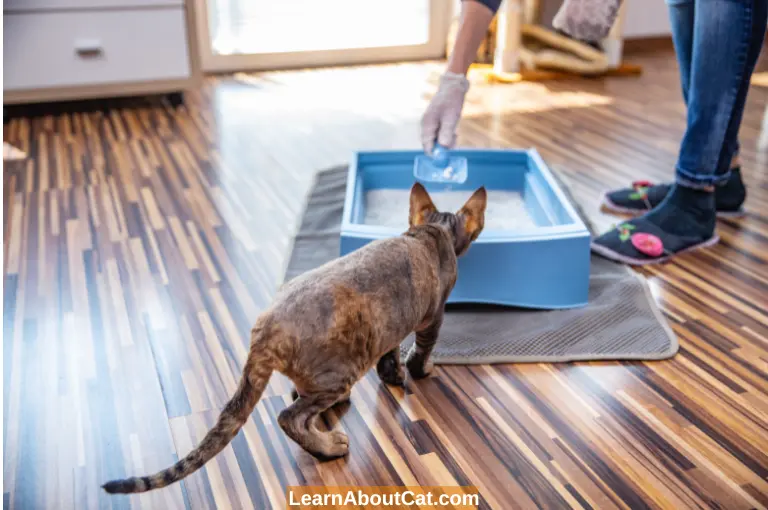
Solution- How to Deal With litter box problems?
Consult your Veterinarian
Consult your veterinarian to ensure there are no medical issues. Ask for a urine test, stool sample, and blood testing, and make sure to fully describe the litter box issue. Punishment by words and actions will probably make things worse. Litter box issues frequently arise as a result of stress rather than out of malice.
Set a Test
Install many litter boxes throughout the home with varied linings, including as newspaper, clumping litter, non-clumping litter, sand, sawdust, discarded carpet, and no litter at all. Try to gently wean your cat back to litter by reintroducing a tiny bit of litter once a week if you find that she prefers a terrible surface (like carpet).
Proper Cleaning
Use an enzyme-based cleaner like Nature’s Miracle to clean soiled patches. Regular cleaners won’t get rid of the urine/stool residues, so your cat could keep using such spots. If the padding or carpet becomes wet, repairs can be required.
Ensure better litter box upkeep. Clean the litter boxes with only soap and warm water once a week and at least twice each day.
Test out Different Litter depths
If you regularly find additional clean litter on the ground next to the box, you’re probably using too much.
Close the door to keep your cat out if the issue just affects that area. If required, confine your cat to a small, cat-proof area that is furnished with a litter box, food, water, and amusement. Keep him there after you’re sure he’s using the litter box, then gradually let him into other areas of the house.
Find Out: Wood Pellet Cat Litter-Is It Safe?
Alternative Methods
Because many cats won’t do both in the same location, feed your cat where he is urinating or defecating. If you want to teach your cat to stay away from previously visited locations, try using aluminium foil, upside-down carpet runners, or double-sided tape. Consider Feliway or Sentry-calming collars.
Check Out: Why Is My Cat Peeing on the Bed or Couch?
An Easy Way to Litter Train a Kitten
A tabby kitten with white and grey stripes is standing in front of a yellow litter box.
The steps below should be followed to toilet train a kitten:
- Put the cat inside and show them the boxes as soon as they arrive, letting them investigate and sniff them.
- Don’t move the boxes after introducing them to your cat to avoid misunderstanding.
- Reward them every time you observe them using it. Praise plus food or toy are appropriate gifts.
- Never reprimand or punish for errors. By doing so, you’ll just make things more tense and anxious, which might make the problem worse and make training tougher. Teaching cats not to repeat the behavior doesn’t work since they don’t associate punishment with inappropriate behavior.
Find Out More About Kitten: When Can Kittens Leave Their Mom?
Frequently Asked Questions
The Bottom Line on How To Train a Cat to Use a Litter Box
You should immediately display the litter box to your cat or kitten. When your cat initially moves into the house, gently put him in the box from time to time to remind him of its location. When he utilizes the box, appreciate her or him. Put the cat in the box right away if it appears perplexed and begins pawing at the carpet or rug. If a cat is pawing at the carpet, rugs, upholstery, or other soft items, it may be seeking a place to release itself because it can’t locate the litter box. You shouldn’t let your cat have unlimited access to the entire house until it consistently uses the litter box.
Who is Isabella?
My name is Isabella, and I am a dedicated and knowledgeable cat enthusiast. With years of experience caring for cats and a deep love for felines, I made a mission to help other cat lovers navigate the challenges of cat ownership.


